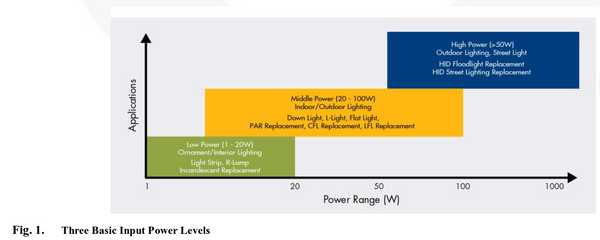Fairchild Semiconductor recently released a white paper on low power LED market and applications. The paper is written by the company’s Lighting Specialist Brian Johnson and Marketing Specialist James Lee. Below is an excerpt from the paper:
Why all the interest in LED lighting? The answers are as individual as the LED lighting application, LED lighting is discussed everywhere; at times, to the depth of the physics that generates the photons or the science of creating an atmosphere receptive for the users and the environment. LED lighting presents an array of lighting choices through color, brightness, and ability to mount in any shape or location. LED lighting pushes the bounds of creativity by using lighting as the paint brush for expressing ideas. LED lighting offers directional, controllable, changeable, and architectural enhancement to the viewers’ quality of experience.
 |
|
Fairchild Semiconductor low power LED. (Photo Courtesy of Fairchild Semiconductor) |
This whitepaper examines LED lighting trends and Fairchild solutions. LED lighting applications fall into three basic input power levels: low-power is less than or up to 20 Watts; mid-power is between 20 Watts and 50 Watts; and high-power is above 50 watts. In the real world, applications do not always fit nicely into these three buckets, but these power levels align when considering LED driver solutions. LED applications are focused on high-brightness LED designs.
This white paper explores low-power < 20W applications, especially bulb-type lamp replacements or retrofits, replacement of existing lamps and fixtures, and new construction fixtures. For more info please see: http://www.fairchildsemi.com/campaigns/low-power-led-lighting-trends-and-solutions/












